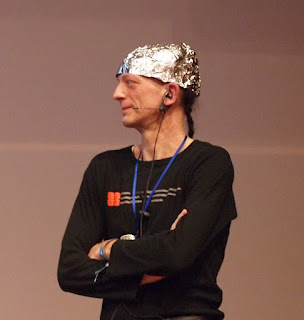What's Behind Anti-Mask Tantrums and Demonstrations?
The other day in Santa Cruz, California, anti-maskers staged a protest at a Trader Joes. It was the second time they'd protested there. The first time they got inside, but this time they were blocked by a phalanx of store employees.
Prevented from getting inside, they settled for harassing masked shoppers who were coming and going. The hypocrisy is astonishing: People who want to make their own choices about wearing masks are attacking people for making a different choice than they would.
More common is the individual version of this, where people throw tantrums because someone asks them to wear a mask. These mask-holes trash stores, get into fights, and disrupt airline flights. What causes people to behave this way? Have they lost their freaking minds?
A leading candidate explanation is psychological reactance. In a nutshell, it says that when people believe a freedom is being taken away from them, they put up resistance. Psychologist Jack Brehm formulated the theory over 50 years ago when he realized that he sought ways to resist his wife's demands that he disappear during her book club meetings at their home.
More recently, persuasion scholars have broken down reactance into four components:
- Freedoms are things a person perceives that s/he is free to do. Here we are talking about concrete behavioral freedoms rather than abstract ideals.
- Threats are things that constrain or may constrain a subject’s ability to exercise a freedom. In the present example this would be messages like "you must wear a mask to enter the store."
- Reactance is a motivational state resulting from the freedom being threatened. It is a combination of anger and cognitions that lead to the anger.
- Restoration describes action taken by an individual to restore or safeguard the threatened freedom. Restoration actions can many forms, including direct action, attacking the source of the threat, denying the threat, and exercising some different freedom.
Clearly, trashing a store is an example of direct action. We could also say that the demonstration is an example of exercising a different freedom—the right to protest. Perhaps the protestors attack the shoppers because they see them as helping create the expectation that the protestors should wear masks too.
So, reactance theory gives us some answer to the question "what could these people be thinking?" You can probably even think of cases where you had reactance to some threat to your freedom. But the availability of an explanation does not mean that the behavior is acceptable.
Its too bad we never get to see what happens to these people after they have thrown their fits. I'll bet $100 that they leave the store or demonstration, get in their cars and drive home, stopping at every single red light along the way.
But wait! Isn't this an egregious violation of their liberty? It slows them down, it costs them money (fuel and brake wear), and it increases their risk of being hit in rear-end collisions. In comparison, wearing a mask is trivial. Why accept the greater intrusion on freedom without a thought, but go insane over the trivial one?
It's a mystery. But mask resistance may be a built-in feature of American culture. During the Spanish Flu epidemic 100 years ago, people also resisted wearing masks. In 1919 people even formed the Anti-Mask League of San Francisco to oppose local mask ordinances. So, today's anti-mask behavior could just be history repeating itself.



